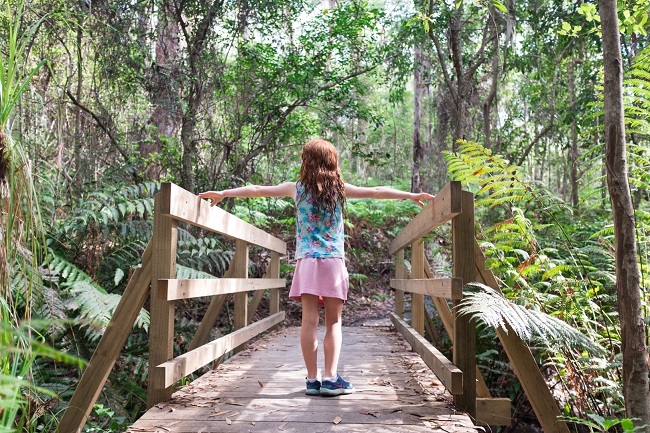The great Western Australian dream of owning a backyard so vast that your kids stub their toes on the push-mower you lost to the weeds three summers ago while fielding their sister’s cover drive is, let’s just face it, over.
The quarter-acre block is dead, and backyards are shrinking faster than a Twisties packet in an oven been turned up to 11.
Of course, there are still sprawling yards here and there for a lucky few, but for the vast majority of us the big backyard has ghosted our aspirations.
Blocks are smaller, houses are bigger, and lawns are harder to justify. Young families are struggling to pry a home from the portfolios of the grey, and apartment living has matured from a twinkle on the gold tooth of property developers to the lived reality of a growing many.
As someone who has devoted much of my working life to advocating for children’s right to play and to connect with the outdoors, you may expect me to be up in arms about this new reality. Tearing up in my tea for the unborn treehouses of tomorrow. Shaking my fist at the cranes on apartment block skyline and yelling at the clock to change its course and return the 1970s to their rightful place in the suburbs of WA.
I’m not.
Not because I’m not a fan of big backyards. I absolutely am. But I’m not mourning their loss, because you don’t have to own a paddock of double-gees for children to have access to the active outdoors play they not only need, but have a right to. And there remains a way for us all to grow bigger backyards.
We know from a growing body of research that children need space, time, and permission to play in order to have the best shot at developing their brains, bodies and social and emotional skills. We know they need to move, to connect with their communities and with place, and to have the freedom to make stuff up and to make stuff ups as the move through childhood and prepare for the stages to come.
In the past, much of that active fun might have happened in a fenced off patch of green-title. That is no longer an option for most.
So, how do we reconcile children’s developmental need for play with the reality of an ever more tightly knit urban fabric? We just have to grow bigger backyards. A different kind of backyard.
What is a backyard? Is it just defined by paperwork of ownership or lease? I think it is something deeper. And something bigger.
A backyard is somewhere that you have a history with. It is a place of memories of relatives who sat in that chair at the Christmas barbecue, of birthday parties, of cubbies, of conversations with neighbours. And it is a place of aspirations. Somewhere you want to spend time with children and grandchildren yet to come.
A backyard is somewhere you feel comfortable. You can wear your weeding shorts and thongs, apply the three second rule to dropped fruit, and you can let your kids take a few risks because you are in a space that you understand and where you will not be judged.
And a backyard is somewhere you know with a level of intimacy unlike you have with other outdoor places. You know every plant and every little corner. You know where the spiders are. You know which bits of dirt will take water and which don’t. And you know which corners are warm in winter and cool in summer.
None of that is about ownership. It is about connection. Connections built over time and through repetition. So, why don’t we start spending more time in our shared spaces? And choose to inhabit our local parks, community spaces, beaches, and nature reserves, not just more often but every day and make them our backyards?
There would be some compromises to be made. It would be a shared backyard after all. But that is how community builds. And as the Twisties packet shrinks what choice do we have but to unshackle ourselves from the quarter-acre block mentality and start enjoying our shared spaces like so many other cultures around the world manage to do?
Here’s the thing. We live in a state that would be the 11th largest country in the world if we indulged our secessionist fantasies, and we have a population half the size of Sydney’s. We are lousy with space. We have the biggest backyard in the world, and it is glorious. We just need to step out from behind our fences and enjoy it.
Want ideas on Growing Bigger Backyards these summer holidays? Each week, we’ll be sharing a new way to grow your bigger backyard, as well as some resources and activity ideas, through our social media channels. Make sure you follow us on Facebook and Instagram to stay updated with each week’s theme! You can also check back in on this page for more info each week, and follow the action on our Events Calendar!
This blog was originally published as an opinion piece in The West Australian on Tuesday, 7 December 2021 – Read the full article

